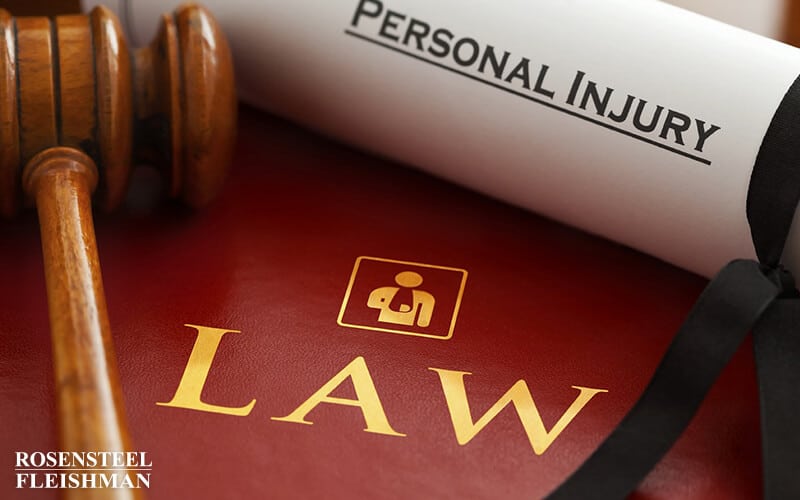When a serious tractor-trailer accident happens, the aftermath can leave people feeling overwhelmed. Many people are unsure where to begin or how to protect themselves as they try to handle painful injuries, medical bills, and the stress of not knowing what comes next. It is common to feel uncertain about what steps to take, especially […]

NC Contributory Negligence and Stop Signs
Our personal injury attorneys are regularly questioned by other NC attorneys regarding the applicability of NC law to specific fact situations. One of the the most difficult laws for personal injury attorneys in NC is contributory negligence. Contrib, for short, is the most common defense in car accident claims. Many times insurance companies will allege contrib assuming the plaintiff (or their lawyer) will accept defeat and not file a lawsuit.
Lawyers who file lawsuits in NC car accident claims must be prepared to argue against contributory negligence. Every fact pattern is different. This article will look at the application of contributory negligence with a car accident occurring at a intersection controlled by a stop sign.
I. CONTRIBUTORY NEGLIGENCE LAW
Snead v. Holloman 101 N.C.App. 462, 400 S.E.2d 91 (1991)
In Snead, Plaintiff was injured in a motor vehicle accident when the defendant pulled out in front of him. The evidence presented at trial tended to show that the plaintiff was approximately two or three car lengths away from defendant's van and was traveling at the 35 mile-per-hour speed limit when the van abruptly attempted to turn in front of him. The defendants contend that the evidence of the plaintiff's failure to apply his brakes immediately prior to the accident was sufficient to raise an issue of fact regarding contributory negligence on the part of the plaintiff.
The Court, in affirming the directed verdict in favor of Plaintiff on the issue of contributory negligence held that:
In the case of an affirmative defense, such as contributory negligence, a motion for directed verdict is properly granted against the defendant where the defendant fails to present more than a scintilla of evidence in support of each element of his defense… Evidence which merely raises conjecture on the issue of contributory negligence is insufficient to go to the jury.
Ellis v. Whitaker 576 S.E.2d 138 (2003)
In Ellis, Plaintiff was injured when Defendant ran a stop sign and collided with her vehicle. Defendant admitted negligence, however, alleged Plaintiff was contributory negligent.
Defendant testified during trial that he thought Plaintiff may have been speeding, traveling in excess of 45 to 55 mph based on the severity of the impact. The jury returned a verdict finding Plaintiff contributorily negligent.
The Court stated that:
Two elements, at least, are necessary to constitute contributory negligence: (1) a want of due care on the part of the plaintiff; and (2) a proximate connection between the plaintiff's negligence and the injury.... There must be not only negligence on the part of the plaintiff, but contributory negligence, a real causal connection between the plaintiff's negligent act and the injury, or it is no defense to the action.
The Court went on to hold:
When considered in the light most favorable to defendants, the evidence in the case sub judice established the following: (1) Plaintiff was driving at a speed of approximately fifty miles per hour; (2) plaintiff's view of the intersection was unobstructed; (3) plaintiff did not apply the brakes prior to impact because no skid marks were found; and (4) the force of the impact resulted in defendants' truck being overturned. However, this evidence merely raise[d] conjecture on the issue of contributory negligence [and was] insufficient to go to the jury.
As for the issue of speed the Court held:
Also, the evidence failed to establish a proximate connection between plaintiff's speed and the accident. Defendants' evidence regarding plaintiff's speed suggested negligence on her part; but whether or not she was speeding, plaintiff was not required to anticipate that the defendant would be negligent. Without more, defendants failed to establish the "real causal connection" between plaintiff's negligence and the accident necessary to prove plaintiff was contributorily negligent.
The Court when looking at all of the evidence in the light most favorable to defendants, held that it failed to provide more than a scintilla of evidence needed to establish plaintiff had sufficient notice to avoid the accident or that her negligence was the proximate cause of the accident.
There are a number of other cases dealing with contributory negligence including Jacobs v. Locklear, 65 N.C.App. 147, 308 S.E.2d 748 (1983) (Decision Affirmed as Modified by 310 N.C. 735, 314 S.E.2d 544 (1984)); Myrick v. Peeden, 113 N.C.App. 638, 439 S.E.2d 816 (1994)(Review Denied by 336 N.C. 781, 447 S.E.2d 426 (1994)); Brewster v. Elizabeth City 137 N.C. 392 49 S.E. 885. (1905); Adams v. State Bd. of Ed 103 S.E.2d 854 N.C. 1958.
II. APPLICATION OF LAW
As stated above, a Plaintiff is under no duty to anticipate the negligence of another. After the close of all the evidence the Plaintiff's lawyer can move for a directed verdict. A directed verdict requests the judge, as a matter of law, to rule in the Plaintiff's favor and take the issue away from the jury. At this point the plaintiff's attorney should argue that the Defendant’s evidence fails to support a conjecture of contributory negligence. The plaintiff's attorney should site the cases wherein the courts have granted the Plaintiffs motion for directed verdict or found error in the issue of contributory negligence being submitted to the jury.
Additional Personal Injury Articles
Losing someone you love because of a workplace accident brings a level of pain and uncertainty that feels impossible to prepare for. Families are suddenly faced with questions about financial stability, how benefits work, and what steps they should take to protect themselves. It can feel overwhelming to sort through legal details while trying to […]
After an accident, it is completely normal to feel uncertain about what your next steps should look like. Back injuries are especially troubling because they can affect everything from your ability to work to the way you go about your daily routine. Many people in Charlotte find themselves unsure about how serious their injury is […]
After a car accident, many people feel unsure about what to do next, especially when injuries start affecting daily life. It is common to feel overwhelmed by medical appointments, insurance calls, and the overall strain the situation creates. When everything feels uncertain, having the support of a car accident law firm in Charlotte can make […]
